London 2012: The Official Video Game of the Olympic Games Review
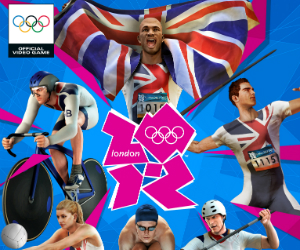 Game: London 2012: The Official Video Game of the Olympic Games
Game: London 2012: The Official Video Game of the Olympic Games
Developer: SEGA Studios Australia
Publisher: SEGA
Available on: Xbox 360, PlayStation 3, Windows PC, OnLive (Xbox 360 version reviewed)
Whatever your views on the event, the hype and anticipation for the Olympics in London this year is impossible to avoid. London 2012 has dominated television, advertising and more, as the infamous logo for the games has been plastered over everything and anything. So it is no surprise then that on official video game for London 2012 has just been released, as the countdown to the games themselves reaches fever-pitch. Olympic tie-ins and athletic titles have long been a staple of the home console market, but can SEGA do something different with the idea, rather than just go down the well-worn route of the button-masher?
GRAPHICS: The presentation will hit you straight-away as all coming across in a very polished way. The logos, themes and fonts that have been present throughout the marketing and branding of the games are used effectively all the way through menu screens, heads up displays and even loading screens. The development team have worked hard to integrate the branding style into the overall aesthetic and, as such, it feels very polished. In terms of in-games models, the locations such as the Olympic Stadium, the Velodrome and Lords’ Cricket Ground, all look ultra realistic and, when coupled with the high quality presentation, make you think you could be watching the events of television. With full access to the Olympic plans etc, you would hope that the team would build accurate representations of all the important venues, and they don’t let us down. The only gripe you could have is that the crowds look awfully flat and pixelated; more reminiscent of the PS2 era than the current console generation.
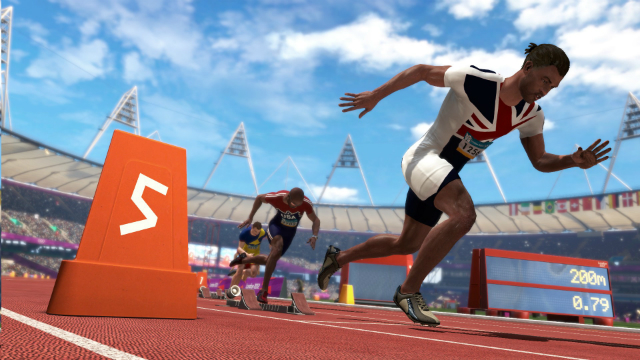
Looking at the athletes themselves, there is a slight disparity. The faces of the athletes are particularly bad when we are treated to a close-up or during events such as weight-lifting where the camera is aimed straight at the character and we get a good look at the less-than-impressive facial modelling. I suppose that with such a large number of athletes involved in the game, it would be a tough job to build so many high-quality character models that differ greatly from one to the next, and as such this doesn’t feel like a major issue. What is important is how the models move when they are taking part in the events themselves. The animation of the competitors during the sports is very smooth and realistic, whether it be the high-speed track events, water-based ones, or even the all-action, complex Kayaking. With a game that is so based around the gameplay mechanics and activities, the graphical integrity certainly takes a bake seat, but that hasn’t meant that SEGA didn’t do a good job of it; London 2012 is a visually successful title.
SOUND: The sound design is, as you would expect from a sim that is aiming to immerse you in a real-life event, suitably authentic. The musical score is sweeping and dramatic, utilising exactly the type of inspiring tunes that you would expect to hear if you were watching the BBC Olympic coverage. Surprisingly, the two-person commentary team is actually pretty convincing. The Olympic Games mode features dynamic commentary which reacts well to the action on-screen, and actually provides insightful and interesting historical facts and figures that do relate to what you are watching. This makes it feel much more organic, rather than just a tape recorder spitting forth reams of pre-recorded lines. Unfortunately the other game modes are commented on sporadically by a typical SEGA movie-trailer style American announcer, which brings us back down to earth with a bump. It is a shame that the dynamic commentary couldn’t run across all modes. Aside from that though, the realism also carries through into all of the events, with convincing grunts, screams and yelps as competitors battle their way through events. The beeps and bloops of timers and scoring systems bring back memories of watching past athletics events, and nothing seems out of place or irritating. The sound design does a good job of immersing you in the Games.
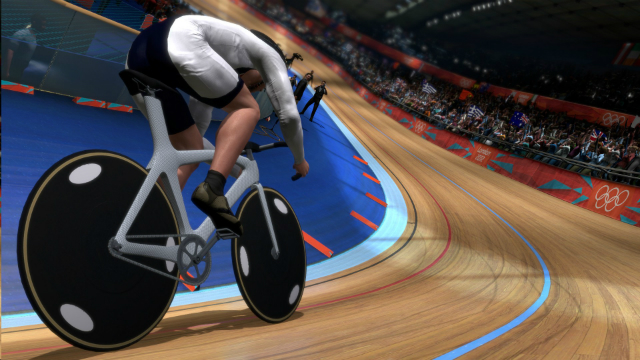
GAMEPLAY: Play is spread over forty-five events, through several different modes, such as event play, where users can pick the specific event or events they would like to compete in and also create and save custom playlists to run through, challenges, where several players compete, whilst trying to attain a set target score, or party play, which is the main multiplayer mode. The real meat of the game is the Olympic Games mode. Here you choose your difficulty and national allegiance, then set out over a series of days and weeks to take part in the qualifying rounds and finals of many of the 45 different events and varieties of sports available in the game. On easier setting you have less to take part in, but ramp it up to hard and not only does the competition get tougher, but you will have to compete in a near-full complement of events. Progress can be saved at the end of each day, and thankfully as you go along you will earn retry tokens, so if you fail spectacularly at a particular sport you can give it another try; these are limited however, so use them wisely. The end aim is to finish top of the medals board and bring glory to your nation of choice.
The game does try to evolve our preconceptions of an athletics title a little though. Now, instead of most events simply needing you to smash the buttons repeatedly as fast as you can, there is a lot more variety in the actions you have to perform. Most of the events now have stamina bars, so tapping too fast will actually be detrimental; now there is an optimum speed or tapping rate you should aim to achieve. Getting the right rhythm and getting the meter into the sweet spot will deliver far bigger rewards than tapping with little control. Other events such as the gymnastics and diving are played out more like dancing rhythm action titles. Precise button presses at the right time will make your competitor perform the required actions. Something like Table Tennis is actually quite a good simulation, with a wide variety of strokes and smashes available to you – and you can really place your shots and add a good amount of spin. There is a nice variety from event to event, some of them are similar to one another but they are different enough to stop the game becoming boring and repetitive.
The main other mode which should be talked about is party play. Whilst this is largely the place for multiplayer battles, it is also the only place where you can take part in Kinect events; whether it be by yourself or with others. This is somewhat limited as only a handful of events are given Kinect support. Sprinting, Archery, Javelin, Cycling and Kayaking are given the motion control treatment, and it must be said that none of them fare all too well. This mode feels distinctly like an afterthought, and the detection of movement isn’t great. The movements the game requests you to make don’t always make sense, for instance to run, you don’t run on the spot like in other games, you simply swing your arms in a running motion. A very strange choice to say the least. It may well have been good to simply avoid motion control altogether in this title if it wasn’t done properly.
MULTIPLAYER: You unfortunately can’t go into the Olympic competition with friends, but multiplayer is available across all other modes, both locally and online. Locally, up to four players can compete, in event play, where you pick and choose your events, in challenge mode, where you co-operate to achieve set goals, or in party play. In party play mode, you can choose to play the selected events with a control pad, or with Kinect, but with the shortcomings of the Kinect control, you are bound to select the control-based option more often than not. That is where the game succeeds. Playing head-to-head in couch multiplayer has always been a strong point for athletics games; and this is no different. Having a showdown in the 100M final is a lot of fun, especially when you are all frantically tapping away.
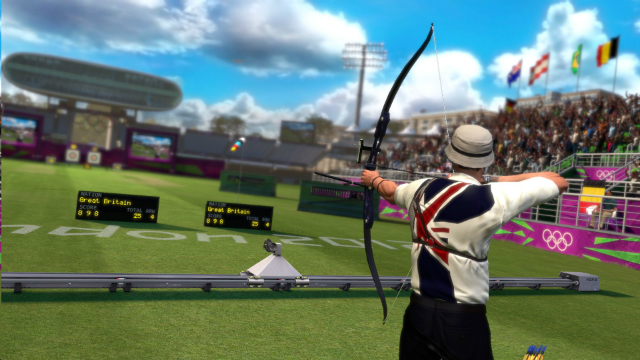
Online play allows for the usual quickly play and custom matches, but you can also play online tournaments, which is a nice addition as results from the events you play are tabulated at the end to find an overall winner. So even if some events aren’t your forte, you will be able to pull things back in another event. A further touch that really re-creates the spirit of Olympic competition is the National Pride rankings. Here, the amount of medals won by online players representing a particular country is measured; so you can help support your home nation to take on the world, by winning medals in online play. So go up against other players around the world and help team GB top the tables.
LONGEVITY: Being an Olympic game, of course there are many records waiting to be broken, and there is a definite element of score attack and this is the perfect game to feature leaderboards and friendly competition between online friends. You even get little messages on the loading screens to compare your personal bests with your friends and other top competitors, giving you that little push to go back and retry all of the events in order to better your times and distances.
Another feature that adds a little to the depth overall is the ability to customise the athletes on a national team. You can pick the particular athlete who takes part in each different event, be it male or female, and edit them to your liking. It isn’t a very comprehensive mode however, but you can change the names and select from around six different preset heads. This wont keep you busy for long, but is a nice touch; you could put yourself in the game in some form and this could be the year you win the 100M.
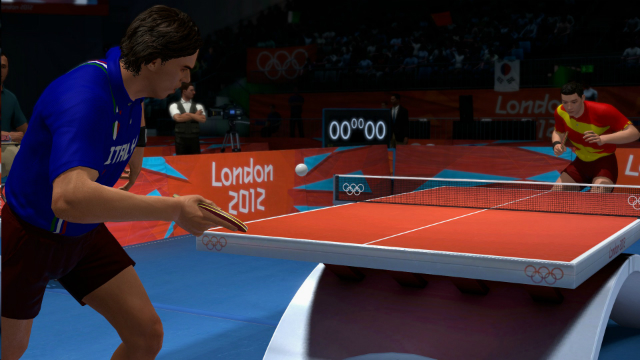
VERDICT: The game certainly offers an experience that comes close to replicating that which we will be watching on TV for the next couple of months throughout the Olympics and Paralympics. The presentation is spot-on, and there is a good variety in both the number of events and how those events are controlled.
What is a big let-down is the motion control implementation in the game. In something like Kinect Sports for instance, we can see that athletic events lend themselves perfectly to motion control, and the idea of actually going through physical activity to perform the Olympic events is a perfect match. Rare managed to make all of their events intuitive and straight-forward, whereas SEGA have picked strange control methods, and player movements don’t seem to be picked up particularly well. The schemes lack the simplicity and accuracy of those found in Kinect Sports, and really seems like a rushed mode.
It really is a let-down, as the rest of the package is still a lot of fun, and the development team have made a solid attempt to evolve the controls away from the much-maligned button hammering techniques favoured by Track & Field titles over the years. Finesse and control are given priority here, and it makes the whole package more interesting, and allows for much greater variety from event to event. Perhaps not a Gold Medal effort from SEGA, but it certainly manages to get on the podium.







